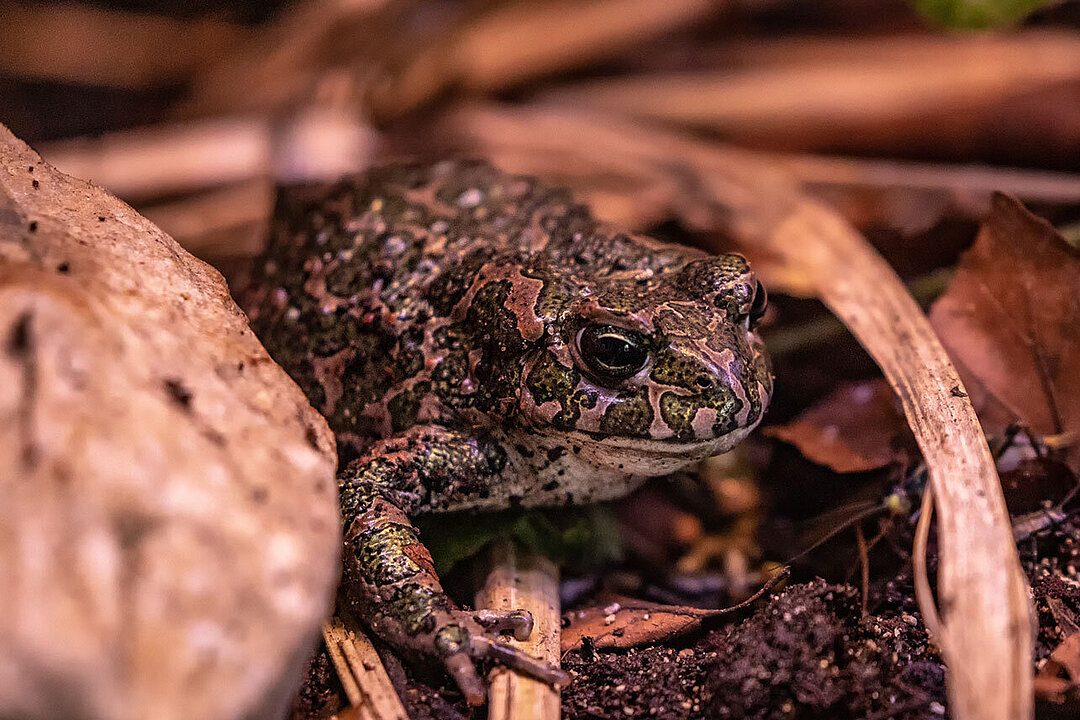![[Translate to English:] [Translate to English:] Feuersalamander sitzend auf Moos und Steinen](/fileadmin/_processed_/b/e/csm_tierpark-hellabrunn-feuersalamander-amphibien-fonds_f7e38466ab.jpg)
Often overlooked and endangered, native amphibians need protection.
Climate change, environmental pollution, diseases and invasive species are massive threats to the 21 amphibian species living in Germany. Stiftung Artenschutz (Species Conservation Foundation) works together with zoo associations, zoos and private holder associations in the German-speaking region to manage the Amphibian Conservation Fund, a grant scheme to finance conservation and research projects. Hellabrunn Zoo proudly supports the Amphibian Conservation Fund. The regional and global decline of amphibian species has prompted zoo associations and private holder associations to join forces to protect the animals. The Amphibian Conservation Fund supports a range of conservation and research projects, as well as conservation breeding and reintroduction, local biotope conservation and environmental education initiatives. This year Hellabrunn Zoo contributed €6,000 to the Amphibian Conservation Fund.
Stiftung Artenschutz oversees the funding of planned conservation measures and the allocation of grants, with the input of the funding partners. In addition to its latest contribution, Hellabrunn Zoo has supported other amphibian conservation initiatives in the past. This includes the general fund, a research study in Eifel National Park on the Bsal salamander plague and a conservation project with the organisation Fundación Atelopus to save the starry night harlequin toad (Atelopus aryescue), which until 2019 was believed to be extinct.
Support needed and image problem
Amphibians are considered to be the most endangered animal group worldwide. 41 per cent of all species are listed as vulnerable on the IUCN Red List. Many environmental organisations such as NABU (Nature And Biodiversity Conservation Union) are committed to protecting the animals and raising awareness about how easy it is to give amphibians a helping hand. Every year, toad fencing campaigns save countless animals from road death during their spring migration. Hellabrunn Zoo and its grounds conservation team Naturschutz AG are also committed to saving the endangered animals by implementing nature-inspired enclosure designs, which creates new retreat and habitat options for native amphibians.
Road traffic is by far not the only problem that amphibians such as frogs or amphibians encounter during their migrations. Sewage, light and cellar shafts also pose deadly dangers for the animals. Habitat loss is another significant threat associated with the decline of many populations. According to Amphibien Rettung (Amphibian Rescue), since 1950 up to 80 per cent of small water bodies have been filled in or completely drained due to the intensification of agriculture in some regions of Germany.
Zoo director Rasem Baban considers the protection of amphibians an important part of the holistic preservation of biodiversity in Germany: "Amphibians are often overlooked as an animal group, which is why the amphibian crisis has disappeared from the public eye. As a result, there is an urgent need to highlight the ecological and cultural importance of these animals and to protect their habitats effectively. With our long-term support, we want to make the public aware of the need to protect these animals and the great work of the Stiftung Artenschutz."
The current conservation measures are supplemented by other initiatives such as rewetting and the creation of new ponds. Many ponds have already been designated as protected biotopes.
